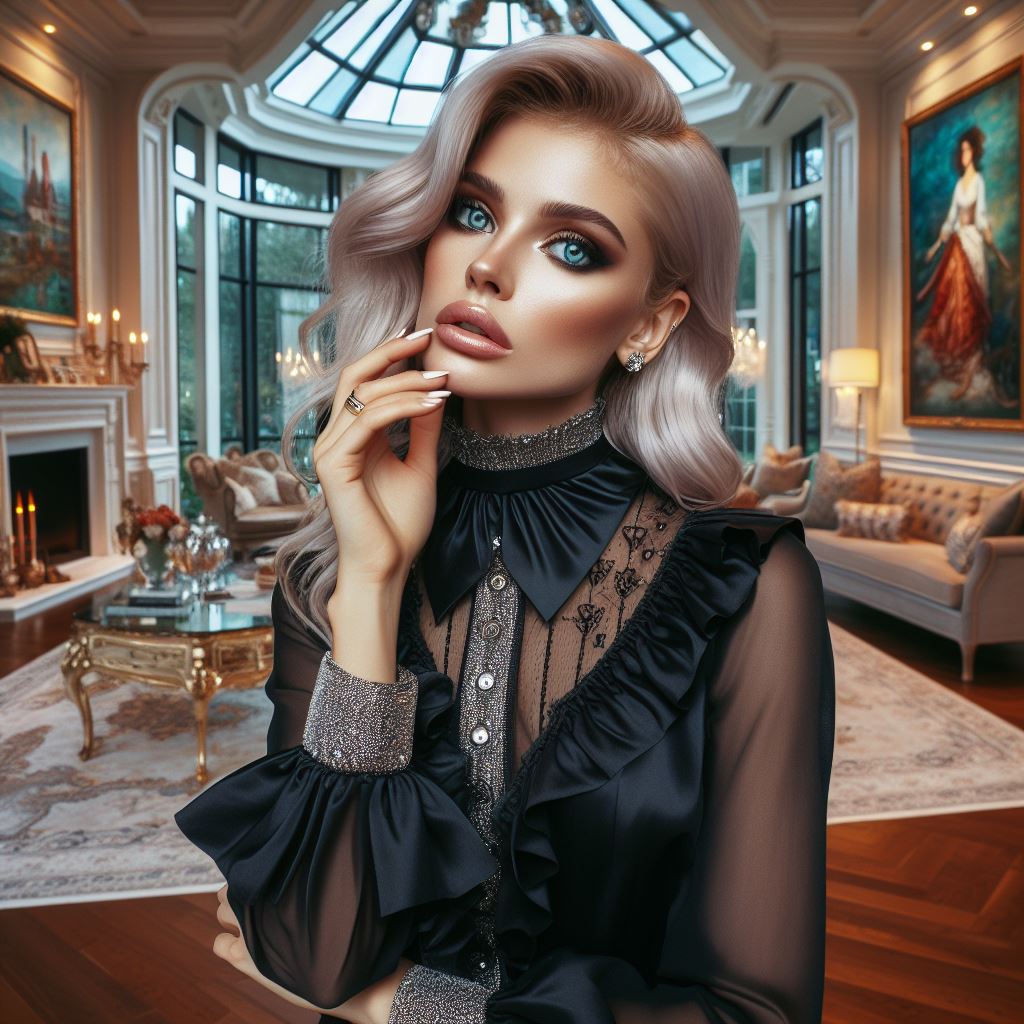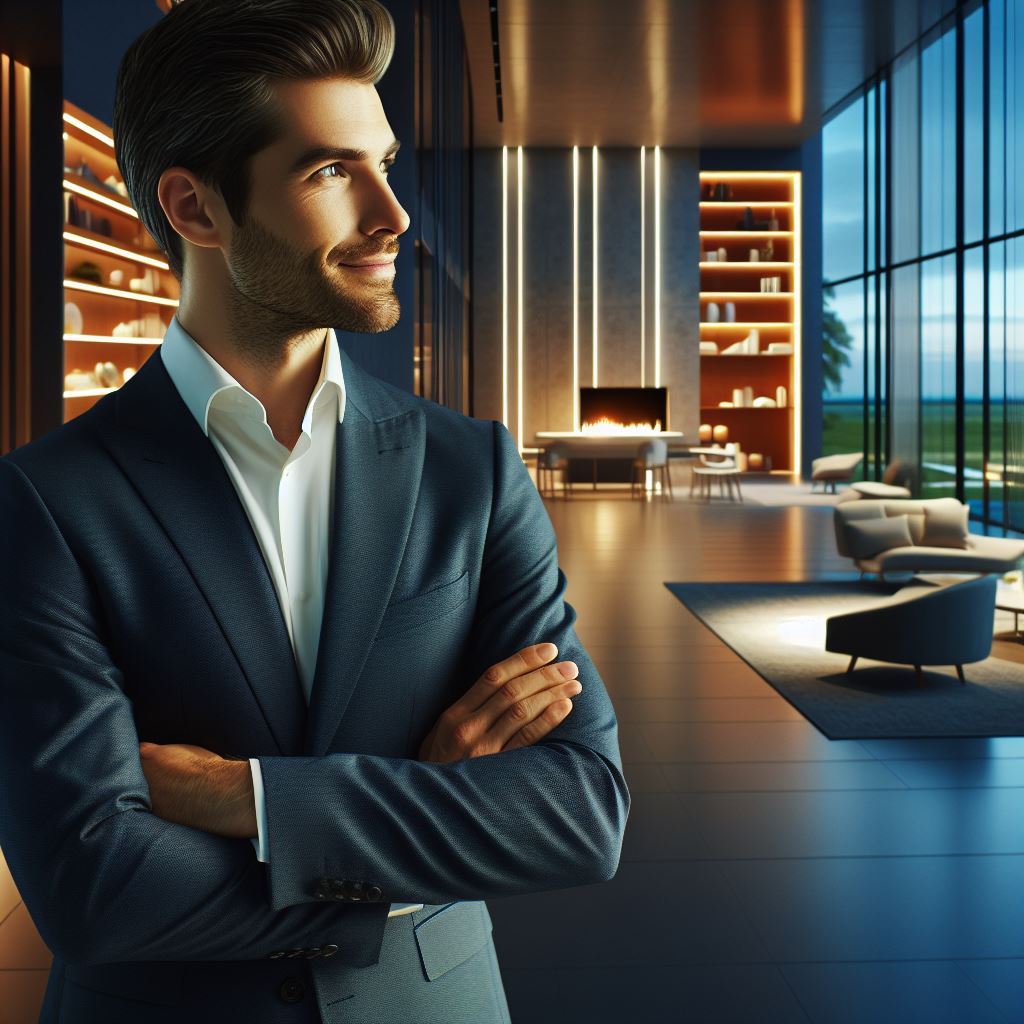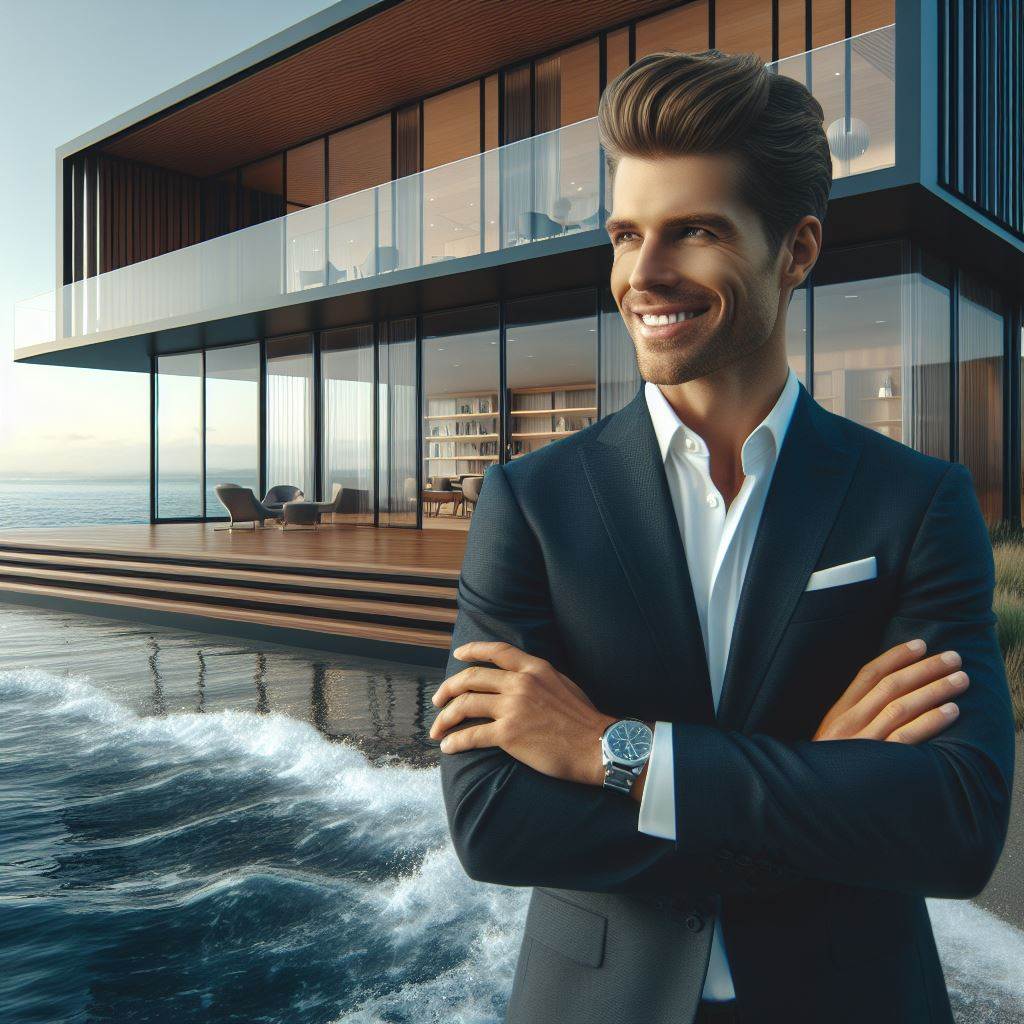Introduction
Art and real estate have come together to create a luxury fusion trend that is gaining popularity.
This trend involves the incorporation of art in the design and development of high-end properties.
It goes beyond simply hanging a few paintings on the walls; it is about integrating art as an integral part of the overall aesthetic and experience.
The growing trend of art and real estate fusion is fueled by the desire for unique and extraordinary living spaces.
Luxury buyers are no longer satisfied with cookie-cutter designs; they want something that reflects their individuality and exclusivity.
This has led to the collaboration between artists, architects, and developers to create one-of-a-kind properties that blend art with real estate.
This trend is incredibly important in the luxury market as it caters to the discerning tastes of wealthy buyers.
Art adds value to the property, elevating it from a mere structure to a work of art in itself.
It creates an immersive and curated experience for homeowners, making their living space not just a place to reside but a personal masterpiece.
Furthermore, art and real estate fusion offers a unique investment opportunity. Art has proven to be a valuable asset, with prices consistently rising over time.
By integrating art into real estate, buyers can benefit from both the appreciation of the property and the potential appreciation of the artwork.
In essence, the fusion of art and real estate is an exciting trend in the luxury market.
It allows for the creation of truly exceptional properties that cater to the unique tastes of affluent buyers, while also offering potential financial benefits.
As this trend continues to grow, we can expect to see even more stunning and innovative art-infused properties in the future.
The Intersection of Art and Real Estate
In the world of luxury real estate, art has become an integral part of creating unique and appealing living spaces.
This trend is not a recent development; the historical connection between art and real estate dates back centuries.
A. Historical connection between art and real estate
Throughout history, art has been used to adorn and enhance the grandeur of real estate properties.
Ancient civilizations, such as the Egyptians and Greeks, incorporated art in their architecture to symbolize wealth and power.
In the Renaissance period, art played a crucial role in the design of opulent palaces and mansions.
Artworks were seen as status symbols and served as a testament to the distinguished taste of the property owners.
B. Art as a tool for enhancing property value
Investing in art not only adds aesthetic value but can also significantly increase the market value of a property.
Art collectors and enthusiasts are willing to pay a premium for a property that complements their valuable art collections.
Certain artworks have proven to be excellent long-term investments, making them attractive assets to have within a property.
When potential buyers see art displayed in a home, it creates a sense of sophistication and luxury.
C. Role of art in creating unique and appealing living spaces
Art has the power to transform a living space and make it truly exceptional.
It allows homeowners to personalize their spaces and express their individuality.
Art adds character, intrigue, and a touch of elegance to any room.
Whether it’s a striking painting, a sculptural masterpiece, or an avant-garde installation, art brings life to a property.
Art creates a sense of wonder and captivates the viewer, making the living experience more enriching.
Read: Investing in Luxury: Tips for High Returns
Art as an Investment in Real Estate
A. The rise of art as an alternative asset class
Investing in art has become increasingly popular in recent years as a way to diversify investment portfolios.
Art has emerged as a unique asset class that can provide solid returns and hedge against market volatility.
- Artworks have the potential to appreciate in value over time, making them a compelling investment option.
- Collecting art allows investors to tap into the passion and emotional connection associated with it.
- Art can act as a store of wealth, providing a tangible asset that can be passed down through generations.
- Unlike traditional investments like stocks and bonds, the value of art is not directly correlated to the performance of financial markets.
- Art offers a sense of exclusivity and can help investors stand out in the real estate market.
B. Benefits of diversifying a real estate portfolio with art
Integrating art into a real estate portfolio can bring numerous advantages to investors.
Here are the key benefits:
- Diversification: Art can act as a hedge against fluctuations in the real estate market, offering stability and potentially higher returns.
- Tax advantages: Investors can take advantage of tax planning strategies when buying and selling art, such as 1031 exchanges and tax deductions for donations.
- Tangibility: Unlike stocks or bonds, art is a physical asset that can be enjoyed and displayed, adding aesthetic value to properties.
- Enhanced appeal: Properties showcasing art can attract high-end buyers and discerning tenants who appreciate the added artistic touch.
- Capital preservation: Art has historically shown resilience, preserving its value during economic downturns and providing a safeguard for real estate investments.
C. Collaboration between art galleries and real estate developers
Art galleries and real estate developers are increasingly collaborating to create immersive experiences that blend art and real estate.
These partnerships foster a unique synergy between the arts and luxurious living spaces.
- Art exhibitions within residential buildings provide a curated environment that enhances the overall aesthetic appeal.
- Developers leverage artists’ creativity to design unique and captivating common spaces, lobbies, and amenity areas.
- Galleries benefit from the exposure to affluent residents and potential buyers, expanding their market reach.
- Developers can monetize art spaces by hosting events, selling or renting artwork, and attracting high-profile buyers.
- Such collaborations elevate the prestige and desirability of both art and real estate, attracting a niche market of art collectors and investors.
Investing in art is now more than ever considered a savvy strategy for diversifying real estate portfolios.
The rise of art as an alternative asset class, coupled with the benefits it brings, has fostered exciting collaborations between art galleries and real estate developers.
These partnerships have the potential to redefine luxury living, creating spaces where art becomes an integral part of the real estate experience.
Read: Luxury Buyer Profiles: Trends and Insights
Art-Driven Amenities in Luxury Real Estate
A. Integration of art installations in residential and commercial spaces
Art installations are being incorporated into luxury real estate projects to enhance the aesthetic appeal.
These installations can include sculptures, paintings, or interactive digital art that elevates the overall ambiance.
By integrating art in both residential and commercial spaces, real estate developers provide a unique experience for residents and visitors.
Art installations serve as conversation starters and create a sense of sophistication and exclusivity.
B. Incorporation of art galleries and museums within real estate projects
Luxury real estate developers are partnering with renowned art galleries and museums to create a cultural hub.
By featuring art galleries within these projects, residents have easy access to world-class artworks.
Art galleries and museums within real estate projects attract art enthusiasts and potential buyers.
This integration also contributes to the growth of the local art scene and promotes the appreciation of art.
C. Luxury amenities inspired by art, such as artist-in-residence programs
Real estate developers are offering artist-in-residence programs where artists can live and work within the property.
These programs provide artists with a supportive environment to create and showcase their artwork.
By having artists living within the property, residents have the opportunity to engage with the artistic process.
Artist-in-residence programs add value to luxury real estate projects, attracting buyers seeking a culturally vibrant lifestyle.
In fact, the fusion of art and real estate is a growing trend in the luxury market.
Integration of art installations, incorporation of art galleries and museums, and luxury amenities inspired by art enhance the appeal and exclusivity of real estate projects.
Not only do these elements create a visually pleasing environment, but they also contribute to the cultural growth of the community.
By embracing the intersection of art and real estate, developers can cater to the desires of discerning buyers looking for unique, aesthetically rich living spaces.
Read: Historic Estates: Luxury with a Past

Case Studies: Successful Art and Real Estate Collaborations
Example 1: The transformation of a neglected neighborhood through street art
In a neglected neighborhood, street art was used as a tool to revitalize the community.
Artists were invited to create murals and installations on abandoned buildings and walls.
The vibrant and eye-catching artworks transformed the neighborhood into a cultural hub.
Residents and visitors started flocking to the area, bringing new life and economic opportunities.
The collaboration between artists and real estate developers created a win-win situation for all.
Example 2: Luxury condos adorned with curated art collections
Luxury condos have embraced the fusion of art and real estate by incorporating curated art collections.
High-end developers collaborate with renowned art galleries to select and display artworks in common areas.
The curated art collections enhance the aesthetic appeal of the condos, attracting wealthy art enthusiasts.
Art becomes a selling point, adding value to the properties and increasing their market demand.
These collaborations create a unique and exclusive experience for residents.
Example 3: The role of public art in activating urban spaces
Public art plays a crucial role in activating urban spaces and engaging the community.
Sculptures, installations, and murals in public areas create a sense of identity and pride for residents.
Open-air exhibitions and art events attract locals and tourists, stimulating economic growth.
Real estate developers recognize the value of incorporating public art into their projects.
By integrating public art, developers contribute to the overall livability and attractiveness of urban spaces.
These case studies demonstrate the successful fusion of art and real estate in various contexts.
From the transformation of neglected neighborhoods through street art to luxury condos adorned with curated art collections, the collaboration between these two sectors brings numerous benefits.
In general, the integration of art and real estate brings forth a luxury fusion trend that benefits both sectors.
Successful collaborations, as showcased in these case studies, not only enhance the aesthetic appeal of properties but also contribute to the cultural, social, and economic development of communities.
Read: Luxury Market Forecast: What Experts Say
The Role of Staging and Art in Real Estate Sales
A. How art can enhance the aesthetics and appeal of a property for sale
Art has the power to transform a space, making it more visually appealing and attractive.
The presence of art in a property can create a sense of luxury and high-end living.
By carefully selecting art pieces that complement the style and design of a property, its overall aesthetic appeal can be significantly enhanced.
Art can add a touch of sophistication and elegance, making potential buyers feel a sense of desirability.
B. Selecting the right art pieces for staging a property
When selecting art for staging, it is important to consider the target market and the property’s style.
Art should be chosen to create a cohesive look that suits the property’s overall design and ambiance.
Pieces that are too bold or controversial should be avoided to appeal to a wider range of potential buyers.
Artwork should be in good condition and well-maintained to ensure a positive impression on potential buyers.
C. The psychological impact of art on potential buyers
Art has the ability to evoke emotions and create a connection with potential buyers.
By strategically placing art in a property, it can create a positive atmosphere, making potential buyers feel more comfortable.
Art can also create a sense of aspiration, allowing potential buyers to envision themselves living in the space.
The presence of art can engage potential buyers and leave a lasting impression, increasing the chances of a successful sale.
In review, art plays a crucial role in enhancing the aesthetics and appeal of a property for sale.
By carefully selecting the right art pieces for staging, the overall look and feel of the property can be significantly improved.
Additionally, art has a psychological impact on potential buyers, evoking emotions and creating a positive atmosphere.
By understanding the influence of art in real estate sales, sellers can maximize the potential of their properties and attract more interested buyers.
The Future of Art and Real Estate Fusion
A. Predictions for the continued growth of this trend
The fusion of art and real estate is expected to continue growing in popularity.
Artistic elements incorporated into properties can enhance their value, attract high-end buyers, and create unique selling points.
As more people with artistic tastes enter the real estate market, the demand for art-focused properties will increase.
The trend is also fueled by the desire to create beautiful and experiential spaces that reflect the owner’s personality and lifestyle.
B. Potential challenges and considerations in merging art and real estate
One challenge is finding the right balance between art and real estate, ensuring that the artwork complements the property without overpowering it.
Another consideration is the potential for artwork to significantly increase the property’s value, attracting art theft or vandalism.
Art-focused properties may have limited appeal to certain buyers who prefer a more traditional or minimalist style.
The cost of acquiring and maintaining art can be a significant investment that may not be feasible for all property owners.
C. The impact of technological advancements on the art and real estate relationship
Technology advancements have made it easier to showcase and market artwork within real estate properties.
Virtual reality and augmented reality can offer immersive experiences of art, allowing potential buyers to visualize artworks within a space.
Artists and real estate professionals can leverage social media and online platforms to reach a wider audience and promote art-focused properties.
Technological advancements also enable the tracking and authentication of artwork, reducing the risk of fraud and increasing trust in art transactions.
Overall, the future of art and real estate fusion looks promising, with continued growth and new possibilities arising from technological advancements.
Conclusion
In this blog post, we have explored the emerging trend of combining art and real estate in the luxury market.
We have seen how art can add value, sophistication, and uniqueness to properties, making them even more desirable for high-end buyers.
If you are a real estate investor or developer, it is worth considering the integration of art into your projects.
This fusion trend offers great potential for differentiation and increased profitability.
Lastly, it is essential to acknowledge the significance of art in the real estate experience.
It not only enhances aesthetic appeal but also creates emotional connections, elevating the overall ambiance and allure of a property.
By recognizing and embracing the marriage of art and real estate, we can elevate the luxury experience for both buyers and sellers in this ever-evolving market.




